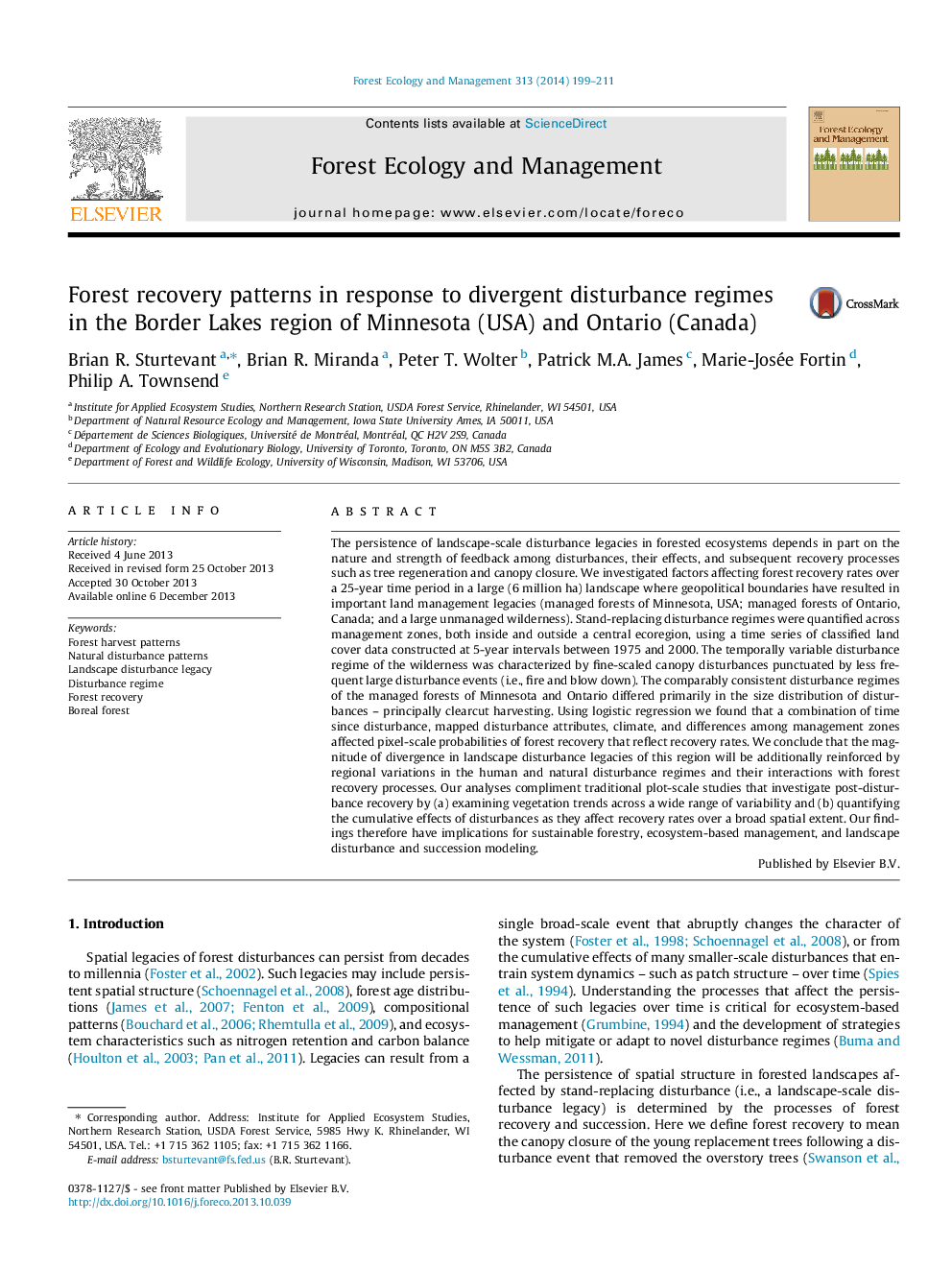| کد مقاله | کد نشریه | سال انتشار | مقاله انگلیسی | نسخه تمام متن |
|---|---|---|---|---|
| 86595 | 159199 | 2014 | 13 صفحه PDF | دانلود رایگان |
• Forest disturbance and recovery patterns analyzed across differently managed forests.
• Management zones had divergent disturbance size distributions.
• Human and natural disturbance regimes interact with forest recovery rates.
• Implications for future spatial legacies affecting multiple ecosystem services.
The persistence of landscape-scale disturbance legacies in forested ecosystems depends in part on the nature and strength of feedback among disturbances, their effects, and subsequent recovery processes such as tree regeneration and canopy closure. We investigated factors affecting forest recovery rates over a 25-year time period in a large (6 million ha) landscape where geopolitical boundaries have resulted in important land management legacies (managed forests of Minnesota, USA; managed forests of Ontario, Canada; and a large unmanaged wilderness). Stand-replacing disturbance regimes were quantified across management zones, both inside and outside a central ecoregion, using a time series of classified land cover data constructed at 5-year intervals between 1975 and 2000. The temporally variable disturbance regime of the wilderness was characterized by fine-scaled canopy disturbances punctuated by less frequent large disturbance events (i.e., fire and blow down). The comparably consistent disturbance regimes of the managed forests of Minnesota and Ontario differed primarily in the size distribution of disturbances – principally clearcut harvesting. Using logistic regression we found that a combination of time since disturbance, mapped disturbance attributes, climate, and differences among management zones affected pixel-scale probabilities of forest recovery that reflect recovery rates. We conclude that the magnitude of divergence in landscape disturbance legacies of this region will be additionally reinforced by regional variations in the human and natural disturbance regimes and their interactions with forest recovery processes. Our analyses compliment traditional plot-scale studies that investigate post-disturbance recovery by (a) examining vegetation trends across a wide range of variability and (b) quantifying the cumulative effects of disturbances as they affect recovery rates over a broad spatial extent. Our findings therefore have implications for sustainable forestry, ecosystem-based management, and landscape disturbance and succession modeling.
Journal: Forest Ecology and Management - Volume 313, 1 February 2014, Pages 199–211
